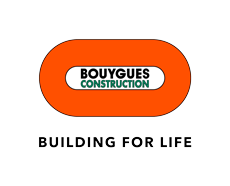Low carbon concrete,
Low carbon concrete, a low impact material

What is low carbon concrete made of?
Low carbon concrete consists of industrial cement combined with mineral compounds, such as calcined clays, fly ash or blast-furnace slag. Depending on the dosage of these additions, the carbon footprint of concrete can be reduced by up to nearly 70%.
H-EVA: Innovative, stand-alone technology
In July 2019, Bouygues Construction signed a collaboration contract with Hoffmann Green Cement Technologies (HGCT) to develop and test concrete formulas for a new cement manufactured through groundbreaking technology called H-EVA (Ettringitic alkaline activation of flash calcined clay). This technology aims to achieve a carbon footprint 70 to 80% lower than that of traditional Portland cement. Unlike the most of the common low carbon cements, that use blast furnace slag obtained from limited deposits unevenly distributed around the world, this geopolymer technology is based on the use of calcined clays, whose potential is much greater and more universal.
"Our industrial approach in the field of cement represents a truly revolutionary advance towards environmentally responsibility in the construction industry. This structuring partnership is the perfect example of Bouygues Construction's drive to support disruptive innovations like our own, in order to sustainably – and immediately – push the construction sector towards a dramatic reduction in CO2 emissions." Julien Blanchard, Chairman of the Management Board and co-founder of Hoffmann Green Cement Technologies
Bouygues Construction is carrying out numerous experiments on low carbon concrete, with another of HGCT's technologies: H-UKR. Based on alkali-activated slags, this technology has been used in projects such as the A10 motorway in France, Novaxia's building in Bagnolet, the Pantin conservatory, modules for the new Lavau prison, and is soon to become fully operational at Olympic venues and the Orléans archives, amongst others.
Emerging initiatives to reduce the carbon impact
Under the drive for sustainability, initiatives are emerging that aim to achieve a 20 to 30% reduction in the construction industry's carbon impact through a massive increase in reuse. The Booster du Réemploi group, made up of around thirty project owners (Groupama Immobilier, Colliers, Cogedim, Bouygues Bâtiment France Europe, Linkcity, Engie, etc.) is committed to supplying 150 construction sites in France with reuse construction materials from former buildings that have been deconstructed. One example is Community in Bordeaux; another is Z5C in Saint-Denis; or 92 Wagram in Paris; to list but a few.
reduction in concrete's carbon footprint achieved by replacing cement with mineral additions
reduction in CO2 emissions for cements used by the Bouygues Construction group by 2030
